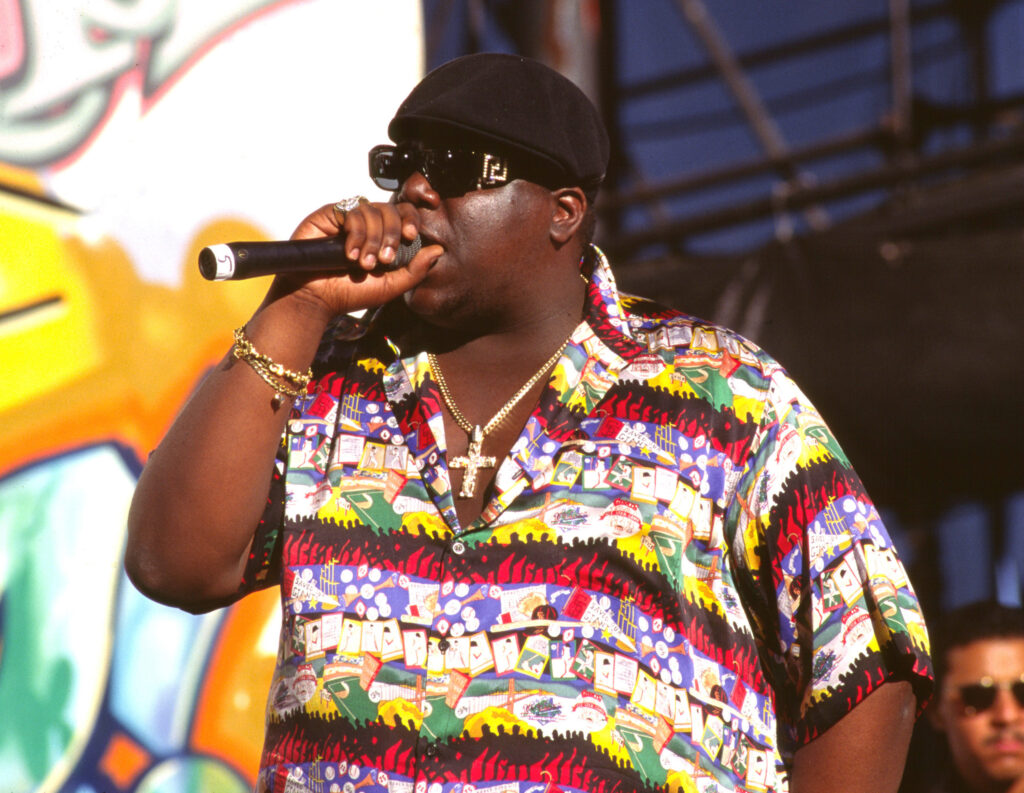Brooklyn, New York, in the early ’90s: The brownstone-laden streets of Bedford-Stuyvesant throbbed with an unmistakable energy. Bodegas and barbershops doubled as discussion forums, with Hip Hop as the preferred topic of debate. This was an era of boomboxes and lyrical bravado, where every street corner and park bench might be the stage for the next big talent. Enter Christopher Wallace, a figure poised to encapsulate this energy, transforming it into an album that would soon reverberate far beyond those same streets.
Few could have predicted the cultural tidal wave that was Ready to Die. Released in 1994, this masterpiece wasn’t merely another album. Biggie Smalls emerged not as a mere rapper but as a raconteur par excellence. His tales, though uniquely his, resonated with thousands who saw fragments of their own stories within his lines. The musings of a young Black man navigating the treacherous terrain of the American dream, punctuated with wit, charm, and a heavy dose of reality—Ready to Die wasn’t just an album but a statement.
Part of Ready to Die‘s allure was its audacity, much like Biggie himself. The very title served as a stake in the ground, a prophetic and sardonic claim that life was never promised, but the music could be immortal. The album sits today as a cornerstone of Hip Hop history, and 29 years on, it’s anything but an artifact.
The Architecture Of A Classic
What makes this album a masterpiece is not just Biggie’s magnetic voice or street-corner philosophies but the veritable dream team of producers and features that flanked him. Names like DJ Premier, Lord Finesse, and Bluez Brothers may not have been Billboard chart-toppers, but they were architects in the house of Hip Hop. With an eclectic roster of talents, the production feels like a symphony that resonates from Brooklyn’s brownstones to Atlanta’s suburbs. Further, tracks like “Juicy” and “Big Poppa” are masterclasses in beatsmithing.
Moreover, while many rappers of the era often succumbed to the temptation of linguistic showmanship, Biggie’s lyrical mechanics were cut from a different cloth. His wordplay was far from mere verbal gymnastics. It was a tightly choreographed ballet of metaphors and life lessons. Tracks like “Gimme the Loot” and “Things Done Changed” are dissertations on the duality of the human condition, navigating a world as dangerous as it was compelling.
Cultural Impact & Legacy

No amount of intricate production or lyrical dexterity would’ve mattered if the album hadn’t set the charts ablaze. Fortunately for Biggie and Hip Hop history, Ready to Die did just that. Certified quadruple Platinum, this debut oeuvre was less an entry into the market and more of a hostile takeover. Critics offered more than nods. They penned raving reviews that often invoked comparisons to previous benchmarks in Hip Hop.
Additionally, the album served as the roots for a tree that has extended its branches far into the various subgenres of modern Hip Hop. From the confessional stylings of Kendrick Lamar to the gritty realism of Pusha T, the ripples of Ready to Die are discernible. Not to forget, this record was the cornerstone on which Bad Boy Records built its empire. Several artists from the label owe a degree of their success to the groundbreaking nature of this project.
Ready To Die Continues To Resonate
The staying power of Ready to Die is nothing short of astronomical. Decades have rolled by, yet the album’s soul is as untamed as ever. It’s not just another album gathering digital dust in the sprawling archives of streaming platforms. It’s a living, breathing entity. A forerunner in every “best of” list and forever pulsing in the veins of a culture that refuses to forget its heroes. Biggie’s opus remains a stylistic and thematic blueprint in a climate that has witnessed the explosion of subgenres and hybrid sounds.
Almost three decades on, the incalculable contributions Biggie made to the industry and the culture at large have yet to be eclipsed. His lyricism is still studied, his flow still imitated but never duplicated. The irony? An album that so explicitly flirted with death has proven immortal. The staying power of Ready to Die is more than a tribute to an artist taken from us far too soon. It remains deeply rooted in its formative icons and a cornerstone in the ever-expanding cathedral of Hip Hop.
The post The Notorious B.I.G.’s Debut “Ready To Die” Turns 29 appeared first on HotNewHipHop.
